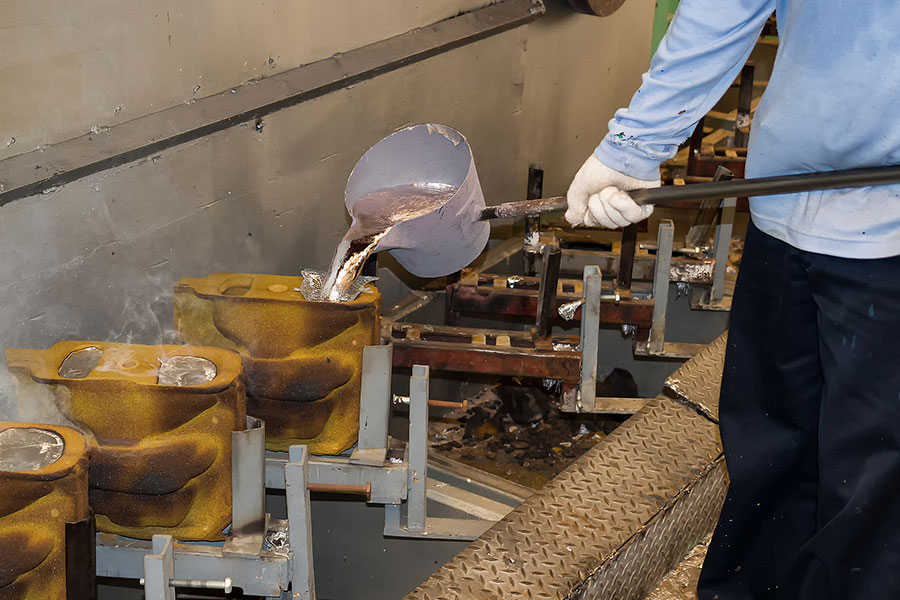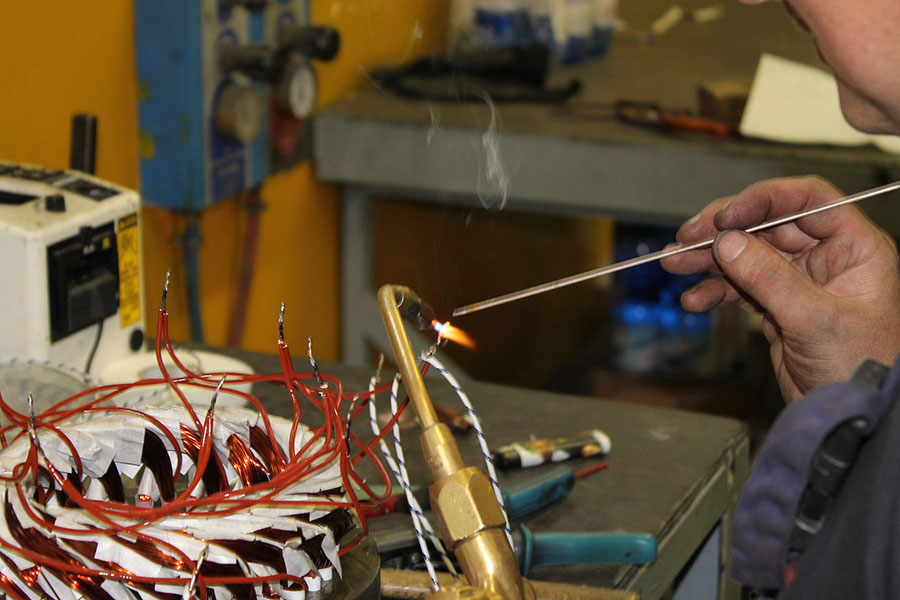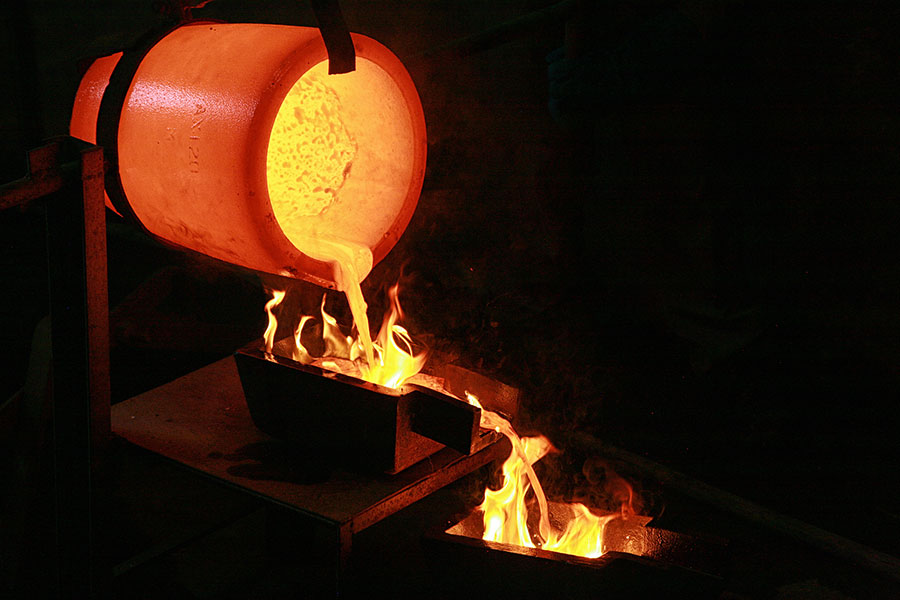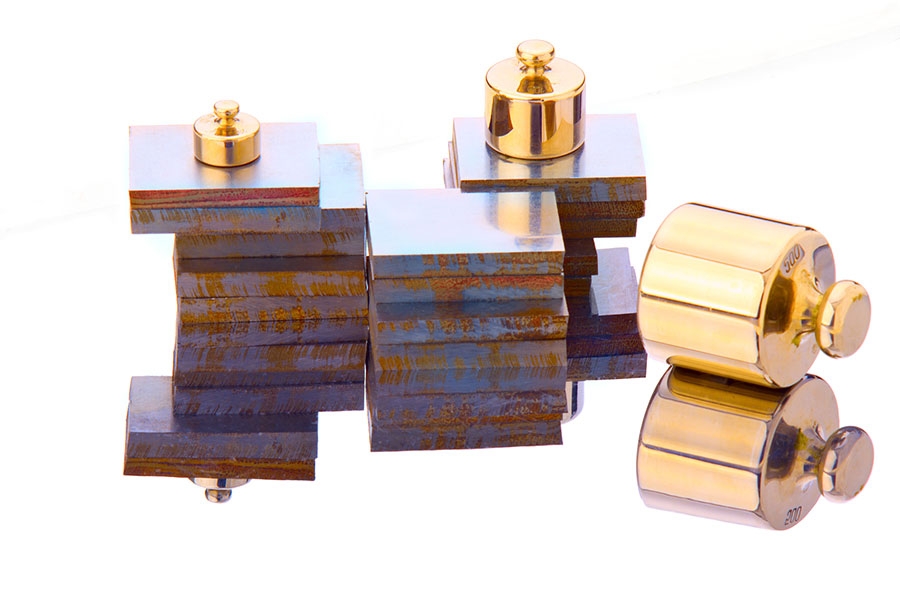Familiar with electroplating process
 Jun 14, 2023|
Jun 14, 2023| View:420
View:4201. Introduction
1.1 Concept
Electroplating is by means of electrodeposition on the surface of the workpiece plating a layer or multi-layer metal plating, giving the workpiece a beautiful appearance or specific functional requirements. When electroplating, coated metal or other insoluble materials do anode, to be plated metal products do cathode, coated metal cations in the metal surface were reduced to form a coating. In order to eliminate the interference of other cations and make the coating uniform and firm, the solution containing cations of the coating metal is used as a plating solution to keep the concentration of cations of the coating metal unchanged. The aim of electroplating is to deposit a metal coating on the substrate, changing the surface properties or size of the substrate. Electroplating can enhance the corrosion resistance of metal (coating metal used in corrosion-resistant metal), increase hardness, prevent wear, and improve electrical conductivity, lubrication, heat resistance, and beautiful surface.
1.2 Principle
In the bath containing the plating bath, after cleaning and special pre-treatment of the parts to be plated as a cathode, with coated metal made of the anode, the two poles and DC power supply respectively negative and positive connection. The electroplating solution is composed of an aqueous solution containing the compounds of the coated metal, conductive salts, buffers, pH regulator additives, etc. After electrification, the metal ions in the plating solution move to the cathode under the action of potential difference to form a coating. The anodic metal forms metal ions in the plating bath to maintain the concentration of the coated metal ions. In some cases, such as chromium plating, is made of lead, a lead-antimony alloy insoluble anode, it only plays the role of transmitting electrons and conducting current. The concentration of chromium ions in the electrolyte is maintained by adding chromium compounds to the bath periodically. During electroplating, the quality of the coating is affected by the quality of the anode material, the composition of the plating solution, the temperature, the current density, the electrifying time, the stirring intensity, the precipitated impurities, the power waveform, etc., timely control is required.
1.3 Function
The technique of using electrolysis to deposit metal coatings on mechanical products with good adhesion but different properties and matrix materials. The plating layer and the hot dip layer are uniform, and generally thin, from a few microns to dozens of microns. By electroplating, a protective decorative and functional surface layer can be obtained on mechanical products, and also can repair wear and machining errors of the workpiece. Most of the coatings are single metal or alloy, such as titanium target, zinc, cadmium, gold or brass, bronze, etc., such as steel on the copper-nickel-chromium layer, and steel on the silver-indium layer. In addition to iron-based cast iron, steel, and stainless steel, there are also non-ferrous metals such as ABS Plastics, polypropylene, polysulfone, and phenolic plastics, but before the plastics are plated, must undergo special activation and sensitization treatment.

2. Performance
2.1The main properties of electroplating parts refer to the binding force between workpieces and metals, corrosion resistance, heat resistance, and mechanical strength force
The binding force is related to the material itself (SUS304 steel plate, thickness 0.35 mm, size 32 × 40 cm), and the chemical and physical properties. The binding force between different kinds of materials and metal coatings varies greatly.
Corrosion resistance
The corrosion resistance of electroplated parts varies greatly with the combination of coatings and the thickness of coatings. The corrosion resistance of electroplated parts is higher than that of metal parts with the same coating because the corrosion of electroplated parts is different from that of metal parts. First of all, the plating parts are corroded according to the mechanism of anodic protection. In light of the fact that the plating layer is completely corroded, the plating layer dissolves and the plating layer falls off completely. Therefore, the double-layer nickel or multi-layer nickel system should be used for electroplating parts with high corrosion resistance. Secondly, the metal coating can not form the principle of corrosion battery, even if there is corrosion, it can not extend to the depth, only for lateral expansion.
Heat resistance
The heat resistance mainly depends on the heat resistance of the metal coating (nickel, chromium) and the adhesion of the metal coating.
Mechanical strength
The mechanical strength of electroplated parts is closely related to the materials (nickel, chromium). Generally, the steel property of electroplated parts is improved.
2. 2 The main factors that affect the binding force between metal and material
Steel plate
In order to ensure the adhesion between the plating layer and the steel plate substrate, the steel plate should be selected with consideration of its size, type, uniformity, stability of the material, moderate hardness of the steel plate surface and internal stress (205N/mm2) , tensile strength (520N/mm2) , steel plate with good electroplating properties, etc. .
Russ
Steel on the drawing line depth to be consistent, the current use of imported 2000 mesh water sandpaper, followed by can not appear inclined wire, messy wire, otherwise there will be steel and nickel plating between the bond.
Steel Plate Surface Pretreatment
Steel Plate surface pretreatment process refers to the main wire drawing (mechanical coarsening), degreasing, and activation, these processes have a great impact on the adhesion.
Coating thickness
The adhesion of the coating is related to its structure, which is caused by two factors: first, the stress of the coating with different thicknesses is different. Second, different coating structures, coating, and steel plates have different Coefficient of thermal expansion, coating toughness is also different.

3. System composition
3.1 electroplating equipment
The biggest function advantage of electroplating is: that in metal and non-metal parts surfaces, can form a new and high gloss metal layer, and directly enhance the visual grade of the original parts. The cost is much lower than that of forming parts directly from metal. Special Waxes and coatings can be applied to areas where electroplating is not required. Chromium plating is widely used for surface treatment in the transportation and furniture industries
3.2. Main materials
There are more than 30 kinds of electroplating metals, including zinc plating, cadmium, copper, nickel, chromium, silver, tin, gold, iron, cobalt, lead, antimony, platinum, titanium, Lawrencium and so on. In addition to single metal coating, there are many alloy coating, such as copper-tin, copper-zinc, copper-nickel, nickel-iron, lead-tin, zinc-tin, zinc-iron, zinc-nickel, copper-cadmium, zinc-cadmium, tin-iron, tin-cobalt, tungsten-iron and so on.
In plastics, ABS is the most commonly used because it can withstand high plating temperatures of 60 ° C (140 ° F) and because its plating and non-plating layers have a high bonding strength, most metals can be plated, but different metals have different grades of purity and plating efficiency. The most common are tin, chromium, nickel, silver, gold, and rhodium (rhodium: a type of white gold that is extremely expensive retains high brightness for long periods of time, and is resistant to most chemicals and acids. It is most commonly used in products with high surface gloss requirements, such as trophies and medals), nickel should not be used in electroplated products that come into contact with the skin, as nickel is irritating and toxic to the skin
3.3 Plating instructions
According to the coating, can be divided into chromium, copper, cadmium, tin, zinc, and so on.

4. The process flow
4.1 Basic process
(polishing → polishing)→ hanging → degreasing → degreasing → water washing →(electrolytic polishing or chemical polishing)→ acid washing activation →(pre-plating)→ electroplating → water washing →(post-treatment)→ water washing → drying → hanging down → inspection of packaging
4.2 The role of each process
Chemical degreasing →Coarsening →Degumming →chemical nickel →Chrome plating→Coke copper→acid copper→bright nickel→chromium plating→Drying→gluing→inspection
Pretreatment
All the processes before plating are called pre-treatment. The aim is to trim the surface of the workpiece and remove the grease, rust, oxide film, etc. Pre-treatment mainly affects the appearance, and adhesion, according to statistics, 60% of the electroplating defective products are caused by poor pre-treatment, so pre-treatment in the electroplating process occupies a very important position. In developed countries, the pretreatment process is very important, which accounts for half or more of the whole electroplating process, so that the coating in good condition can be obtained and the bad rate can be reduced greatly.
Degumming
The colloidal palladium adsorbed on the surface of the part in the catalyst solution is not catalytic because it is surrounded by a bivalent tin ion, it is necessary to dissolve the bivalent tin around palladium by the gelation process to expose it and make it truly catalytically active.
Shiny nickel
When the parts are corroded by the corrosive medium because the sulfur potential in the bright nickel coating is lower than that in the semi-bright nickel coating, the bright nickel coating is corroded preferentially as an anode coating, moreover, the corrosion direction changes from longitudinal to transverse, avoiding the large and deep corrosion results, thus greatly slowing down the corrosion rate of parts.
Coarsening
The micro-roughness of the part surface can increase the contact area between the plating surface and the injection part, and increase the adhesion between the plating layer and the part surface.
Sandblasting
Remove corrosion, slag, carbon deposits, old paint layers, and other dry oil stains from the surface of parts; remove molding sand and oxide scales from the surface of castings, forgings, or heat-treated parts; Remove surface burrs and directional abrasions; reduce surface roughness of parts to improve adhesion of paints and other coatings; diffuse extinction of parts.
Polished
Remove all kinds of macro defects such as Burr, rust, scratch, Weld, weld.
Main salt system
Each plating will develop a variety of main salt systems and their corresponding additive systems. Such as galvanizing cyanide galvanizing, zincate galvanizing, zinc chloride (or called potassium salt galvanizing), ammonia salt galvanizing, and zinc sulfate system.
Each system has its own advantages and disadvantages, such as good dispersing ability and depth ability of cyanide zinc plating solution, fine crystallization of coating, good adhesion with the substrate, good corrosion resistance, wide process range, the bath is stable and easy to operate and is not sensitive to impurities. But highly toxic, serious pollution of the environment. A chloride zinc plating bath is a single salt plating bath without a complexing agent, and the wastewater is easy to treat. The brightness and smoothness of the coating are better than other systems, easy plating of forgings, etc. However, due to the weak acidity of chloride ions, it will cause corrosion to the equipment, on the one hand, and on the other hand, this kind of plating solution is not suitable for deep-hole or tubular parts that need to add auxiliary anode.
Additives
Additives include gloss agents, stabilizers, softeners, wetting agents, low-zone positioning agents, etc. Lustre agent is divided into the main luster agent, Carrier Lustre agent, and auxiliary luster agent. For the same main salt system, using the additives made by different manufacturers, the quality of the coating obtained is very different. In general, Europe, the United States and Japan and other developed countries the best additives, followed by Taiwan, China's relatively inferior than the first two categories.
The combination of the main salt and the additive of a specific manufacturer determines the overall performance of the Bath used. Excellent additives can make up for the deficiency of some properties of the main salt. Such as excellent chloride zinc plating additives and chloride main salt with the bath deep plating ability is better than many cyanide zinc plating bath deep ability.
4.3 Electroplating equipment
Hanging Gear
A square hanger is used with a square plating bath, and a circular hanger is used with a circular plating bath. Round
The square hanger needs to be surrounded by a dispersed current device such as barbed wire or to shorten the length of the anode plates on both sides, use the elliptical anodic arrangement shown.
Agitator
Promote the flow of solution, make the state of solution distribution, and eliminate the bubble on the surface of the workpiece.
Power Supply
DC, good stability, small ripple coefficient.
Post-processing
After electroplating, various treatments are carried out to enhance various properties of the coating, such as corrosion resistance, anti-tarnishing ability, solderability, and so on.
Dehydration treatment: water-added dehydration agent, such as bright nickel plating after treatment
Passivation treatment: improve the corrosion resistance of the coating, such as zinc plating
Anti-tarnishing treatment: add anti-tarnishing agents in water, such as silver plating, tin plating, gold plating, etc.
Improve solderability treatment: such as Tinning.
Therefore, the post-treatment process directly affects the quality of these functions of the coating.

5. Cosmetic packaging applications
In the cosmetic package industry, the electroplating process is mainly applied to external components because the coating after electroplating can not contact directly with the contents, such as a variety of packaging shell lipstick shells, Cap Shell, cosmetic tool components, and so on.














View More(Total0)Comment lists